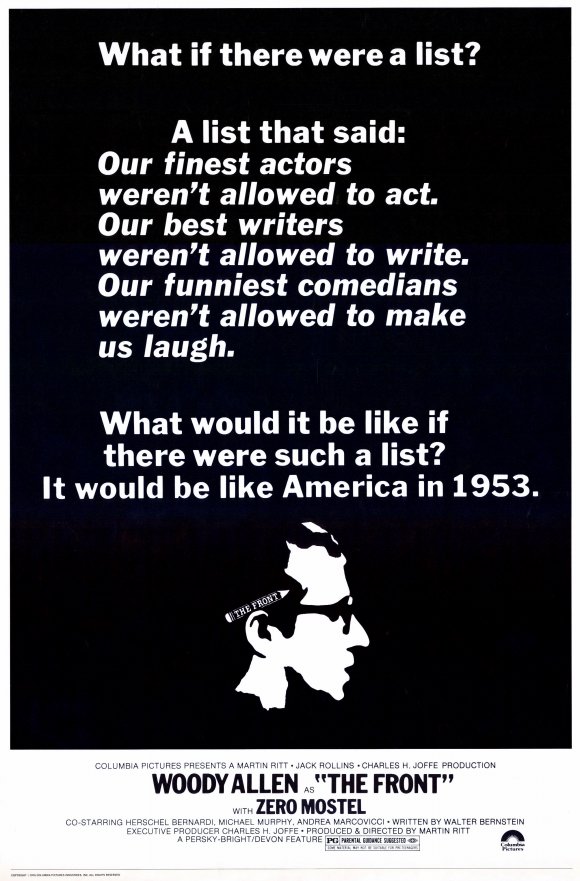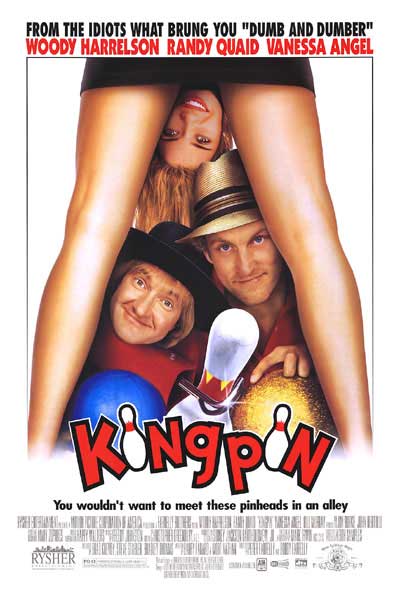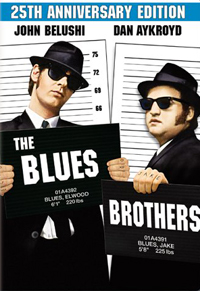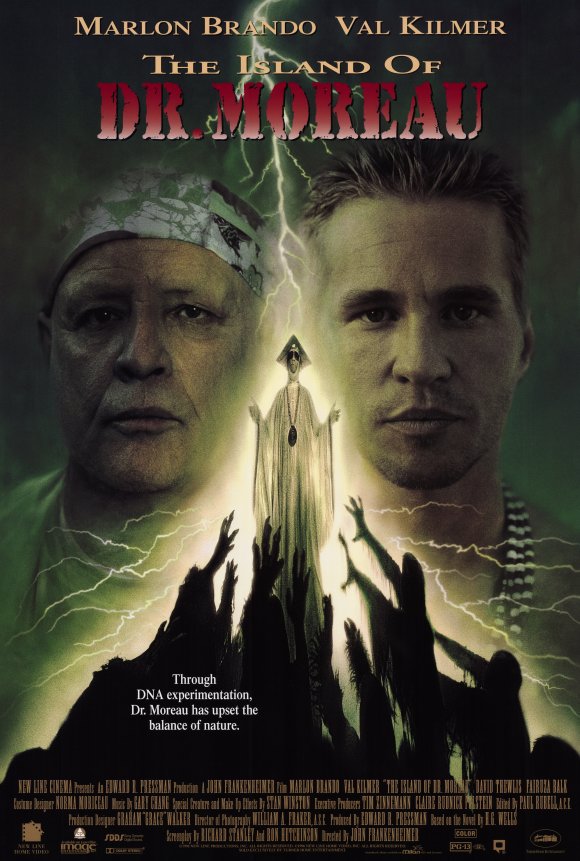The Front
 During one of the ugliest periods in American political history, as the Cold War hit hysteria, a drunk congressman named Joseph McCarthy managed to destroys thousands of American lives and careers with his House Un-American Activities Committee. HUAC would accuse people of being Communists (many of the accused at one time may have belonged to the then totally legal Communist Party or donated to causes that were Russian-related—this was years earlier when Russia was our ally against Germany). To clear your name you needed to name names and praise HUAC. Most famously many in Hollywood (almost always Jewish folks) were called to testify; some played ball with McCarthy and were considered “friendly witnesses” (Sterling Hayden, Elia Kazan) while many others refused to testify and either went to jail or were blacklisted from working.
During one of the ugliest periods in American political history, as the Cold War hit hysteria, a drunk congressman named Joseph McCarthy managed to destroys thousands of American lives and careers with his House Un-American Activities Committee. HUAC would accuse people of being Communists (many of the accused at one time may have belonged to the then totally legal Communist Party or donated to causes that were Russian-related—this was years earlier when Russia was our ally against Germany). To clear your name you needed to name names and praise HUAC. Most famously many in Hollywood (almost always Jewish folks) were called to testify; some played ball with McCarthy and were considered “friendly witnesses” (Sterling Hayden, Elia Kazan) while many others refused to testify and either went to jail or were blacklisted from working.
Screenwriter Walter Bernstein was one of those blacklisted, but by the end of the ‘50s many gutsy producers began to break the blacklist by hiring the recently unemployable. Bernstein made a comeback writing the script for Fail-Safe and eventually wrote The Front, a semiautobiographical memoir of the period. Besides Bernstein the film is full of blacklisted talent on both sides of the camera, including actor Zero Mostel and Director Martin Ritt (Hud, Norma Rae).
Everything You Always Wanted To Know About Sex, But Were Afraid To Ask

Like most of Woody Allen's early comedies Everything You Always Wanted To Know About Sex, But Were Afraid To Ask is the definition of "hit or miss." This is a joke a minute film. Some are wonderfully funny but, like Airplane some years later, when you throw a ton of jokes at the wall not all of them are going to stick. Enough do to make this well worth the experience and make it an above average comedy. Released during the sexual liberation and adult sexual reeducation of the early '70s, this is kinda/sorta based on David Reuben's hugely popular manual about human sexuality of the same name. Allen uses the chapter heads to basically create seven short films, spoofing the pseudo seriousness of the subject matter. Some work better than others, but oh boy, the ones that do work are home runs. Here's the rundown starting with the least successful of the seven and moving to the better ones.
Why Do Some Women Have Problems Reaching Orgasms?
Continue ReadingKingpin
 Though they hit the big-time as screenwriters and directors with their first film, Dumb & Dumber, the Farrelly brothers, Peter and Bobby, peaked commercially and critically with their third film, There’s Something about Mary. Their gross-out, dumb humor mixed with lazy sentiment became the standard for turn-of-the-century-era comedy; however, it was actually their less popular second film, Kingpin, which remains their best and funniest flick. It has the raunch, it has some heart, but most importantly, what makes the film special is the outstanding casting of its three leads: Woody Harrelson, Randy Quaid, and Bill Murray. Their performances, along with some of the supporting character actors, help the film rise above its sometimes weak script. Kingpin may not always bowl strikes but it is at least good enough to share a lane with the other best bowling movie ever, The Big Lebowski.
Though they hit the big-time as screenwriters and directors with their first film, Dumb & Dumber, the Farrelly brothers, Peter and Bobby, peaked commercially and critically with their third film, There’s Something about Mary. Their gross-out, dumb humor mixed with lazy sentiment became the standard for turn-of-the-century-era comedy; however, it was actually their less popular second film, Kingpin, which remains their best and funniest flick. It has the raunch, it has some heart, but most importantly, what makes the film special is the outstanding casting of its three leads: Woody Harrelson, Randy Quaid, and Bill Murray. Their performances, along with some of the supporting character actors, help the film rise above its sometimes weak script. Kingpin may not always bowl strikes but it is at least good enough to share a lane with the other best bowling movie ever, The Big Lebowski.
Back in the disco days of the late ‘70s, a young Iowan man, Roy Munson (Harrelson), looked like he was on his way to becoming a bowling god, until he hooked up with a conniving pro-bowler named Ernie McCracken (Murray) for a little hustling. The naive Roy didn’t realize that the sleazy Ernie, who drinks Tanqueray & Tab, was threatened by the younger bowler’s talent and leading him astray. A bad con with the wrong guys leads to Roy getting his hand cut off and the end to his promising bowling future. CUT TO: 17 years later. Roy now sports a prosthetic hand (over a hook) and a bad comb over haircut. He’s down and out, a drunk and bad conman forced to sleep with his hideously haggish landlady (Lin Shaye, brilliant) to cover his rent. Roy has hit the bottom until he happens upon a naive young Amish bowler, Ishmael Boorg (Quaid, the 40-something actor seems to be playing about 20). After much coercing and posing as an Amish cousin Roy finally convinces Ishmael to hit the bowling road with him to learn the con and eventually play for the big-time, where Ishmael can earn money to save the family farm.
The Blues Brothers
 There was a time in 1978 when John Belushi had the number one movie in theaters— National Lampoon’s Animal House. He also starred on the massively popular Saturday Night Live and his band The Blues Brothers, a group he co-fronted along with SNL co-star Dan Aykroyd, had the number one album in the country. The success of their album Briefcase Full of Blues led to a film adaptation, The Blues Brothers—the first and still the best of many films to originate from SNL skits. It’s a loud musical-action-comedy film that works in all three genres while boasting some great car chases, stellar music, and staying very funny throughout.
There was a time in 1978 when John Belushi had the number one movie in theaters— National Lampoon’s Animal House. He also starred on the massively popular Saturday Night Live and his band The Blues Brothers, a group he co-fronted along with SNL co-star Dan Aykroyd, had the number one album in the country. The success of their album Briefcase Full of Blues led to a film adaptation, The Blues Brothers—the first and still the best of many films to originate from SNL skits. It’s a loud musical-action-comedy film that works in all three genres while boasting some great car chases, stellar music, and staying very funny throughout.
Fresh from a stint in prison Jake (Belushi) reunites with his brother Elwood (Aykroyd). Spurred on by an old friend, Curtis (Cab Calloway) they visit their childhood orphanage and learn that it’s on the verge of being shut down for owing back taxes. After a vision “from God” in church they decide to reform their old blues band and raise money with a large charity concert. Most of their bandmates have contempt for them and need convincing to reunite. Along the way they tend to wreak havoc and leave large swaths of destruction wherever they go which leads the police after them. They also create foes with a country/western band, The Good Ol' Boys (led by Charles Napier), when The Blues Brothers steal their bar gig. They disrupt a Nazi rally and manage to put a carload of uniformed Nazis on their trail (led by the hilarious Henry Gibson of Nashville). Oh, and Jake’s jilted lover ( played by Carrie Fisher) attacks them with machine guns and flame torches whenever she is able to catch up with them.
Party Girl

A few years ago a film premiered at Sundance starring several major blockbuster stars, shot by a couple of music video directors, and produced by a small, but successful Hollywood production company. Because of an aggressive marketing campaign and a highly publicized distribution deal, the film won several Academy Awards and made more than $100 million. Regardless of its high star wattage, its directors’ wealth of commercial experience, and Hollywood development credentials, it was still termed an “independent film.” 11 years previous, for 1/50th of its modern counterpart’s budget, Party Girl was made in New York by a first time filmmaker, starring an actress who, except for a notable supporting turn in a Richard Linklater comedy, had had only small character parts in independent films. Party Girl was accepted into Sundance that year and garnered only a limited theatrical run. But over the years through word of mouth, it has become a beloved cult hit, quoted ad nauseam by its devotees, whose ranks multiply yearly.
The plot seems at first utterly conventional, straying between nominally feminist chick flick to slacker comedy. Downtown It girl Mary (Parker Posey) is unemployed, on the verge of eviction, and “fabulous,” which in movie parlance means she wears quirky outfits and uses her acerbic wit against her friends. When she gets arrested for turning her apartment into a makeshift nightclub, Mary is bailed out by her godmother, Judy, a librarian. In order to pay Judy back and to prove herself to as capable and trustworthy, Mary becomes a clerk at Judy’s library. Gaining her good opinion is complicated by Judy’s constant panting that she can’t trust Mary because she reminds her so much of her mother, an irrational grousing that is the movie’s only major flaw. Mary’s mother may have been quite the party-goer, but many young women are, and one can’t hold young people accountable for doing the same things that their parents did when they were the same age. I would be extremely frustrated if my grandparents always said, “Gillian, you’re such a bleeding heart liberal, just like your mother was when she was your age. I won’t be surprised if you end up getting divorced, too.”
Continue ReadingJulien Donkey-Boy

Not to downplay this movie, because it’s wonderful, but the prime reason to see it is Werner Herzog, who, if you didn’t already know, is absolutely hilarious. Reason number two is that this is the only American film that is classified as a Dogma film under the Dogme 95 criteria. Whether you think the movement is a pretentious load of bull or not is irrelevant. The requirements, while altered I’m sure, are a welcome change in terms of the crystal-clear hoopla thrills that we’re used to. This film employs an array of interesting techniques and improvisational performances that should not be missed.
The story follows a schizophrenic young-adult named Julien (Ewen Bremner), and his dysfunctional family. His brother Chris (Evan Neumann) is a high-school wrestler who aims to please their domineering father; his sister Pearl (Chloë Sevigny) is mousy individual who is pregnant with Julien’s child; and their father is an impatient bully who you find yourself siding with anyways. Oh, and there’s grandma (Joyce Korine), but she’s kind of like a prop. The entire movie is shot with grainy film stock (possibly 16mm), and is presented in a way that resembles a crazy reality TV show. Julien can be seen hanging out with his handicapped friends, mumbling to himself or others on the street, cross-dressing around the house, etc. The most memorable and heart-breaking of his activities are his phone calls to his deceased mother. He sits in one room, while his sister is in another, and they have conversations over the telephone where she pretends to be their mother. Obviously this is not good for his condition, but it also is one of the few moments that allows you to understand that he has good intentions and is simply lonely.
Continue ReadingLadies And Gentlemen, The Fabulous Stains

Surely you remember the riot grrl movement of the 90s – it was hard to forget the underground feminists creating their own DIY scene and giving rise to a resurgence in punk.
Well, here we have an 80s film that was often referenced by those riot grrls.
Continue ReadingTrash Humpers

"It's kind of like an ode to vandalism. There can be a creative beauty in their mayhem and destruction. You could say these characters are poets or mystics of mayhem and murder, bubbling up to the surface."
--Harmony Korine, on Trash Humpers
Continue ReadingThe Island of Dr. Moreau
 In terms of guilty pleasures, John Frankenheimer’s 1996 kinda/sorta adaptation of H.G. Wells’s novel The Island of Dr. Moreau may elicit the most guilt but certainly a lot of pleasure. By most standards the film is a complete mess with a legendarily ugly story of getting to the screen. It’s utterly indulgent and over the top, but it also has a giddy grotesqueness that makes it completely entertaining. Like its characters it reeks of madness, in one of those “what were they thinking” kinds of ways. Much more interesting than the ‘70s Burt Lancaster version, this later edition plays like a long, drug-fueled trip you wish would end but that the next day you think back and decide maybe it wasn’t so bad after all.
In terms of guilty pleasures, John Frankenheimer’s 1996 kinda/sorta adaptation of H.G. Wells’s novel The Island of Dr. Moreau may elicit the most guilt but certainly a lot of pleasure. By most standards the film is a complete mess with a legendarily ugly story of getting to the screen. It’s utterly indulgent and over the top, but it also has a giddy grotesqueness that makes it completely entertaining. Like its characters it reeks of madness, in one of those “what were they thinking” kinds of ways. Much more interesting than the ‘70s Burt Lancaster version, this later edition plays like a long, drug-fueled trip you wish would end but that the next day you think back and decide maybe it wasn’t so bad after all.
After surviving a plane crash and now lost at sea, United Nations worker Edward Douglas (David Thewlis) ends washed up on some kind of hidden private island (the kind that may have existed in H.G. Wells’s day). It’s actually an experimental playground for ex-respected superstar mad scientist Dr. Moreau (Marlon Brando). He was once on the cover of Newsweek but his crazy ideas had him laughed out of academia. Slowly Edward begins to grasp what is happening here, with the help of his zonked-out, druggy assistant, Montgomery (Val Kilmer). Moreau has been playing with DNA and turning exotic wild animals into half-men, some more successfully than others. His father/god complex has alienated the wilder ones who feel enslaved; they put together a rebellion against their full human captors.
Blood for Dracula

When I caught wind that Andy Warhol produced trashy cult films in the '70s, I rushed to find everything available. Trash, Heat, and Flesh were introduced to me first, and all of these are directed by Paul Morrissey. What's also funny about this movie and all of the Morrissey/Warhol collaborations is that they star one of Warhol's troubled muses from his photography career, Joe Dallesandro. There is also a rumored cameo from Roman Polanski, but I've been too in awe of the cheesy story to keep an eye out for him. Blood for Dracula is perhaps one of the cooler variations of Bram Stoker's Dracula tale. This is due, in part, to Udo Kier's sickly performance as the famed blood-sucker. In short, it is a version that presents the villain in a pathetic light, which ultimately turns the entire move into a satirical mess. Count Dracula and his dying sister are in a bit of a bind. Both are extremely ill and fear that the next slumber they have in their tombs will be their last. Unlike most other Dracula tales, these two require a special kind of blood to feast on: the blood of a virgin. Just when their future looks bleak due to all the promiscuous girls in town, the Count's servant convinces him to have a vacation in a city with more religious convictions. They decide on Italy, and upon arrival, hear of a family with four marriageable daughters who are interested in suitors.
Before they arrive, the parents (Vittorio De Sica, Maxime McKendry) of the four girls decide to coach their daughters and emphasize the importance of the Count's inquiry and his request for a virgin bride. Little do they know that two of their daughters have frequent rendezvous with their manservant, Mario (Joe Dallesandro). Once the Count arrives, he goes through some trouble explaining the coffin he has brought with him and is escorted around the grounds in a wheelchair because he's so weak. He also goes through many comical efforts to remind his hosts that he has a special diet. One of the funniest and most pitiful scenes is when he is desperately in need of nourishment and his servant returns with bread soaked in a girl's blood. It has this odd and somewhat intentional resemblance to a drug addict blissfully indulging in his latest "hit." When the need for blood becomes unbearable, he moves in for the kill and begins visiting the two daughters who are the most attractive. It just so happens that these two are the ones who are involved with Mario and their blood makes him sicker than he was before. Everything boils down to the other two daughters. He creates a bond with the eldest, and she is the one who is honest about her past suitors, thus ultimately of no use to him. The only one left is the youngest, who the parents claim is too young to marry, and is also a prude. But before he can get to her, Mario beings to snoop around and notices that his two lovers' behavior has grown more than mysterious since Dracula's arrival.
Continue Reading




